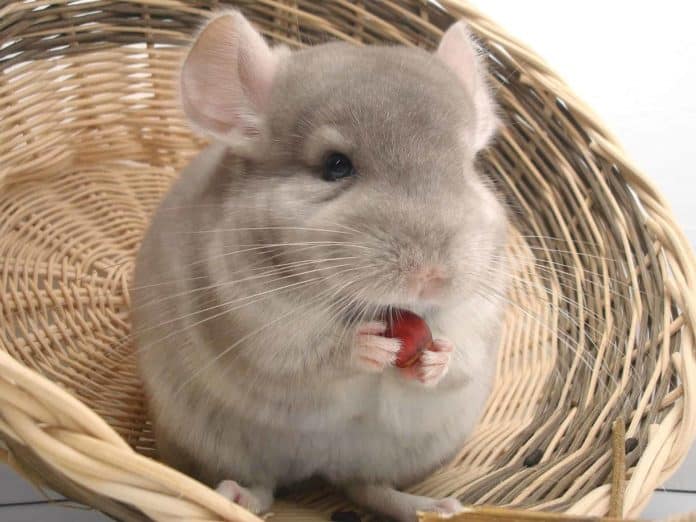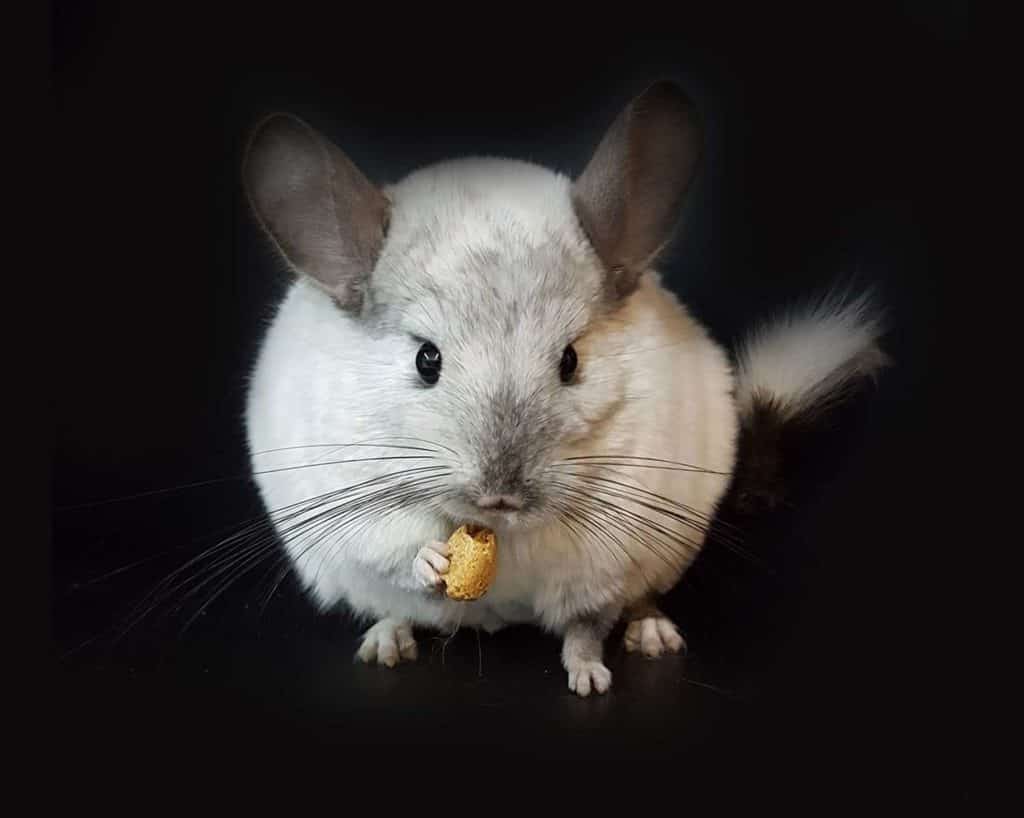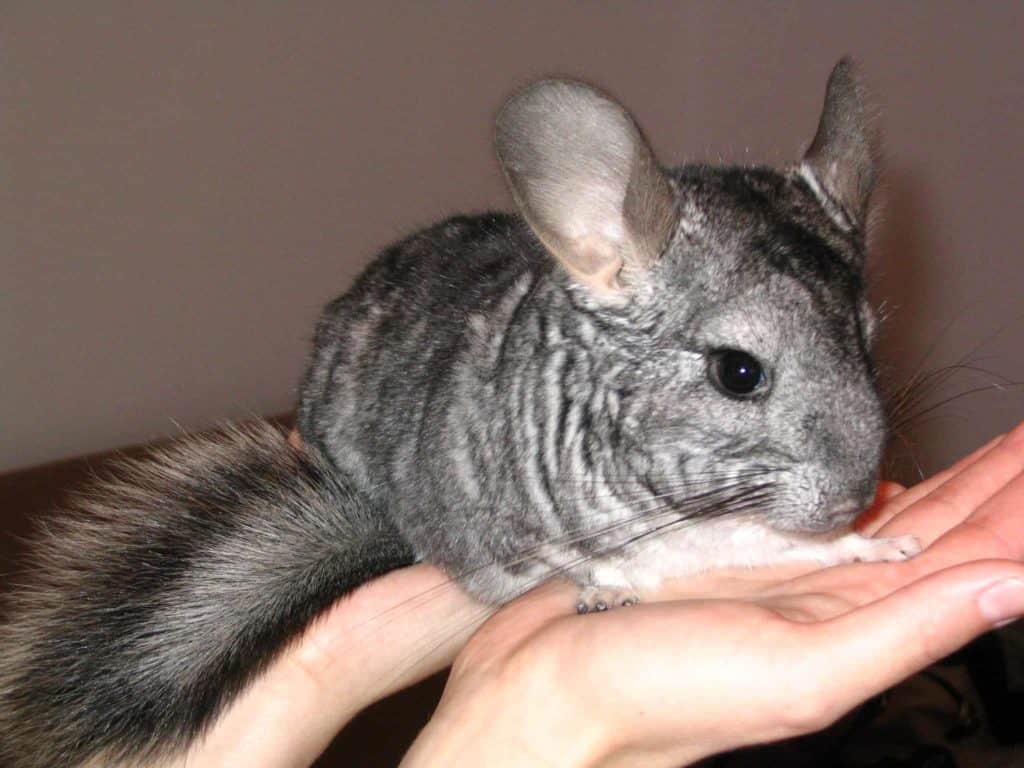Do you know the chinchilla has the softest fur on earth?
This is just one of the reasons these small mammals make such appealing pets, alongside their friendly nature and cute, squirrel-like good looks.
Indeed, the chinchilla is a fascinating creature and one that’s definitely worth getting to know. If you’re looking for a sociable pet that’s a little bit different then a chinchilla may well be right for you.
However, right at the start you should know these cuties can live up to 20 years, so before falling head over heels for these fluff-balls, be sure you can commit to a life-time of care.
Fascinating Facts about Chinchillas
Chinchillas are similar to rabbits in that they are most active at dawn and dusk, and their teeth grow throughout their life. But in the wild, chinchillas hail from dry, cool environment of the South American Andes Mountains. This means they have evolved to cope with low temperatures and find heat difficult to deal with.
Here are some home truths about chinchillas it’s as well to be aware of:
- Chinchilla fur is kept clean with dust baths. Water and chinchilla fur is not a good mix
- If a chinchilla feels threatened they may shed or ‘slip’ their fur in large patches in order to escape
- Chinchillas are sociable creatures and best kept in pairs to avoid loneliness
- Chinchillas can have babies from just 8 weeks old, so best keep those boys and girls apart from a young age.
- Like other rodents, chinchilla teeth are open-rooted and grow all the time.
Intrigued by chinchillas? Let’s find out more about how to care for them.
Setting Up a Chinchilla Home
Think of a chinchilla as a ground-dwelling squirrel and you begin to appreciate why they need plenty of space. You’ll need to provide roomy living quarters that allow the chinchillas to run, scamper, and climb.
For a pair of pet chinchillas (remember, a lone chinchilla is a lonely chinchilla) the minimum chinchilla cage size is:
- Floor space of 1 m x 1.5 m
- Minimum height of 1.3 m
- Shelves at multiple levels
Essential cage furniture includes:
- A dust bath
- Enclosed beds with comfortable bedding
- One snuggly bed that can accommodate both chinchillas together
PLUS
- Separate beds for each chinchilla for when they need “Me” time
- A heavy ceramic food bowl or dish that is hard to tip over
- A sipper water bottle
- A chinchilla marble. This is a slab of marble that can be popped in the fridge and then in the cage to provide a cool surface in hot weather
- Toys
- Branches to chew on
- Deep bedding material, such as shredded paper, to cover the floor
Bear in mind that chinchillas are chewing machines, so the cage needs to be made of metal and have a wire bottom or solid bottom to avoid escapees. You should place the cage in a draft-free spot, since chinchillas easily catch chills.
Chinchillas are clean creatures but be sure to spot clean the cage every day, and remove and refresh bedding once a week.
Healthy Eating for Chinchillas
In their native South America, chinchillas dine off grass, tree bark, and low growing greenery. This provides a high fiber diet, rich in calcium, which makes for healthy teeth and bones.
To mimic this, provide good quality green (Timothy) hay for the chinchilla to snack on 24/7 as the mood takes them. In addition you can give snacks of fresh fruit and veg; but give these in moderation as the high moisture content can cause diarrhea, bloating, or colic.
Providing a moderate amount of chinchilla pellets is also a good idea, for a balanced diet. However, avoid the ‘muesli-mix’ foods as the chinchilla is likely to pick out the tasty parts and leave the wholesome stuff behind, which leads to a poor diet (just like us snacking on biscuits whilst leaving the wholemeal bread).
Instead, opt for extruded or pelleted chinchilla diets, where each nugget looks identical. This prevents selective eating and promotes a healthier diet.
Talking of healthy, be careful with high fat or high sugar treats, such as sunflower seeds or dried fruit. Yes, the chinchilla will love to eat them, but they are the equivalent of candy or chocolate and will lead to obesity and bad teeth, so feed only in moderation.
Chinchilla Coat Care
That super-soft fur doesn’t like water. Instead of bathing a chinchilla in water, you should provide a chinchilla dust bathe in order to keep the coat in prime condition.
Chose a tray or bath that is large and deep enough for the chinchilla to have a satisfying roll in. Fill it to a depth of about 10 cm with special, fine grade chinchilla sand. Pop the tray in once a day for around 20 minutes. This allows the chinchillas some grooming time, but leave the bath in longer and it will become soiled and they’ll refuse to use it.
Once a week, tip out the old sand, clean the tray, and refresh with new sand, in order to keep the chinchillas bathroom facilities hygienically clean.
Chinchilla Health Care
Chinchillas are sensitive and can become sick as a result of drafts, heat, stress, or poor diet. Here’s what to watch for:
Heat Stress
The sweet spot for chinchillas is a temperature range 15 – 25 Celsius. Above this and they may experience heat stress or heat stroke. Signs include red ears, lack of movement, shaking, and salivation.
In hot weather, provide a fan and/or chilled marble slab. Also, keep the cage in an air conditioned space.
Sore Heels
Lacking of bedding can lead to sores and ulcers on the chinchilla’s heels. These can become infected and be a real problem to sort out.
Prevent this happening by providing deep bedding to cushion the chinchilla’s feet from the floor
Overgrown Teeth
A poor diet and lack of opportunity to chew leads to overgrown teeth and dental abscesses. Signs of this include teeth grinding, poor appetite, a wet chin, and weight loss.
If you suspect dental disease, take your chinchilla to an exotics vet. They may need an anesthetic in order to x-ray the jaw for root abscesses and file down the teeth. Prevention is better than cure, which means providing a hay rich diet for its ideal blend of fiber and calcium.
Respiratory Infections
Chinchillas have a delicate respiratory tract and irritation from ammonia (from urine) can quickly lead to a chest infection. Signs include rapid shallow breathing, poor appetite, or a runny nose. See a vet immediately.
Again, prevention is preferable with regular spot cleaning of the cage to avoid ammonia buildup.
Fur Chewing
A stressed, bored, or anxious chinchilla may pull out their own fur. This is often a sign the chinchilla is unhappy in some way. Take a long hard look at the chinchillas living conditions, diet, and opportunities to play and socialize in order to correct any problems that are triggering stress.
Also, get the chinchilla checked by a vet for parasites or pain, since these can also cause coat condition to fail.
And Finally…
With the right care and attention, chinchillas make delightful pets. Just be sure to give the chinchilla plenty of love and play, including time outside of the cage each day. When you do things right, you will share many years of pleasure with your chinchillas.











